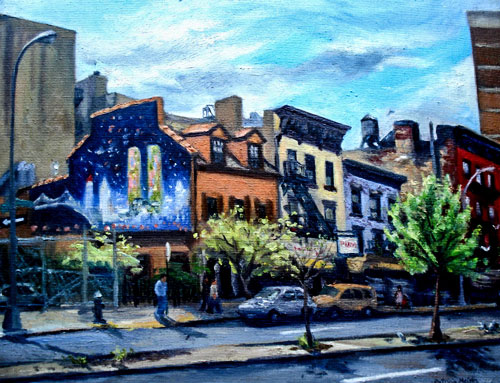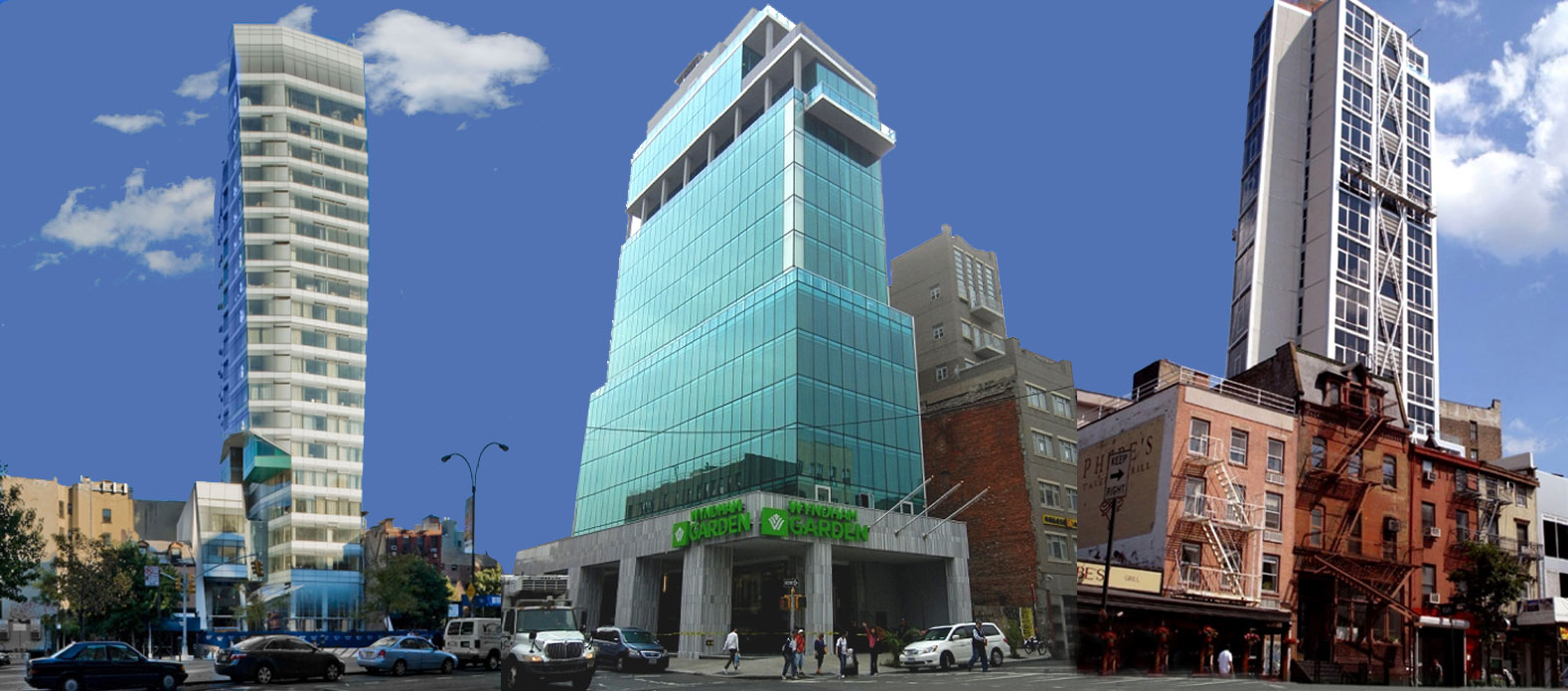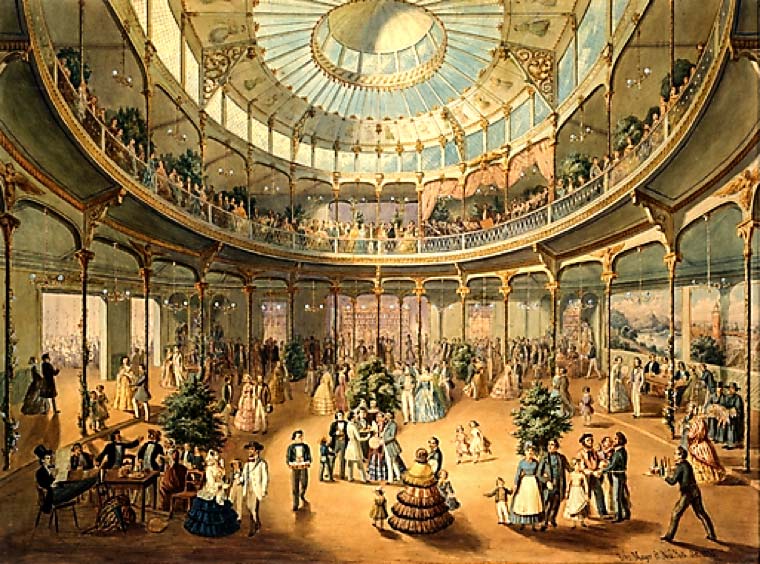
Interior of the German Winter Garden at 45 Bowery, 1865.
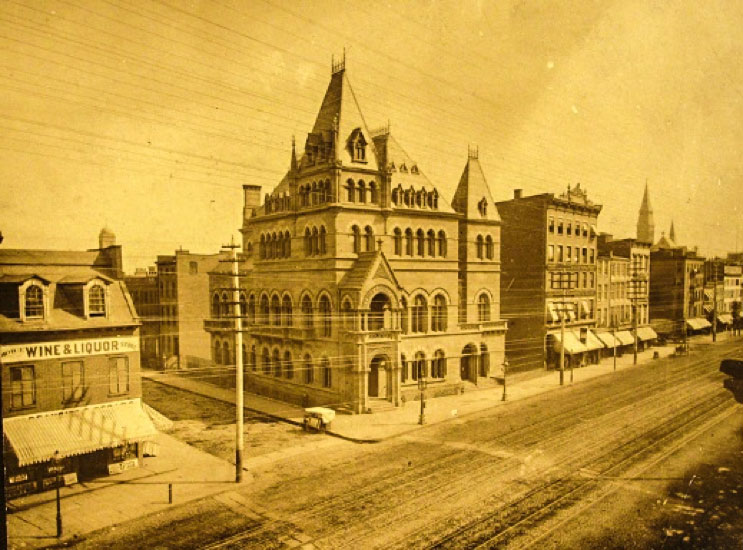
1876 photo of the Dry Dock Bank that once stood at 339-343 Bowery, at the corner of Bowery and 3rd Street.
As Nathan Silver shows us in the classic study Lost New York, the destruction of beautiful and distinctive architecture in this city — structures that help tell us who we are and where we came from — did not begin with the destruction of magisterial Penn Station in 1963. The Bowery was the city’s first entertainment district, with theatres, nightspots and businesses that served the working class as well immigrant Irish, Italian, Chinese, Germans and Jews, yet few of the theatres of that time survive to tell the tale. One of those cited by Silver was this stunning structure that once stood on lower Bowery and catered to the Germans of the area’s Kleindeutschland (Little Germany) .
135 Bowery: DEMOLISHED in 2012
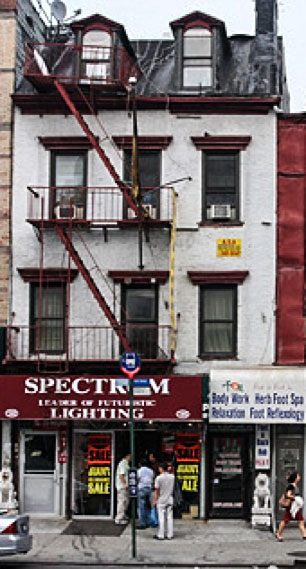
BUILT: 1819; ALTERATIONS 1903, CIRCA 1920
ARCHITECT: UNKNOWN STYLE: FEDERAL
This Federal-style dwelling was constructed in 1819 for John A. Hardenbrook, who owned two lots, 133 and 135 Bowery by 1809. (In 1814 he moved his soap and candle manufacturing establishment from Broadway to a shop at 133 Bowery.) The three-story building with attic is of wood frame construction with a brick façade laid in Flemish bond and a surviving end chimney. Characteristic of the Federal style, the peaked roof has twin gabled dormers capped by a cornice with returns and wood spandrels suggesting arched windows.
The building was probably converted to mixed use in the last quarter of the 19th century. In 1903, architect Edwin C. George introduced projecting show windows at street level. Interior columns were made fireproof with terra-cotta blocks. At this time galvanized iron window frames with classical molded lintels replaced the original simple stone lintels on the second and third floors. The original stone sills remain.
In 1907, the building was owned by John Samowindyke and leased to Bernhard Gutter. By 1920, ownership had passed to Samowindyke’s widow, Anna who was leasing it to Benjamin Gleidman. At this time interior alterations were made to the first and second floors and new store windows were made flush with the building line. Reflecting its participation in almost 200 years of rich and varied Bowery history, it has housed a hat-maker, the Red, White and Blue gambling dive in the 1890s, a barbershop, a pawnbroker, and later, Abraham Edson’s jewelry store. Surviving in a remarkable state of preservation, No. 135 is a rare example of a Federal-style dwelling converted to mixed use in response to the changing residential/commercial climate of the Bowery.
138-142 Bowery: DEMOLISHED March 2016!
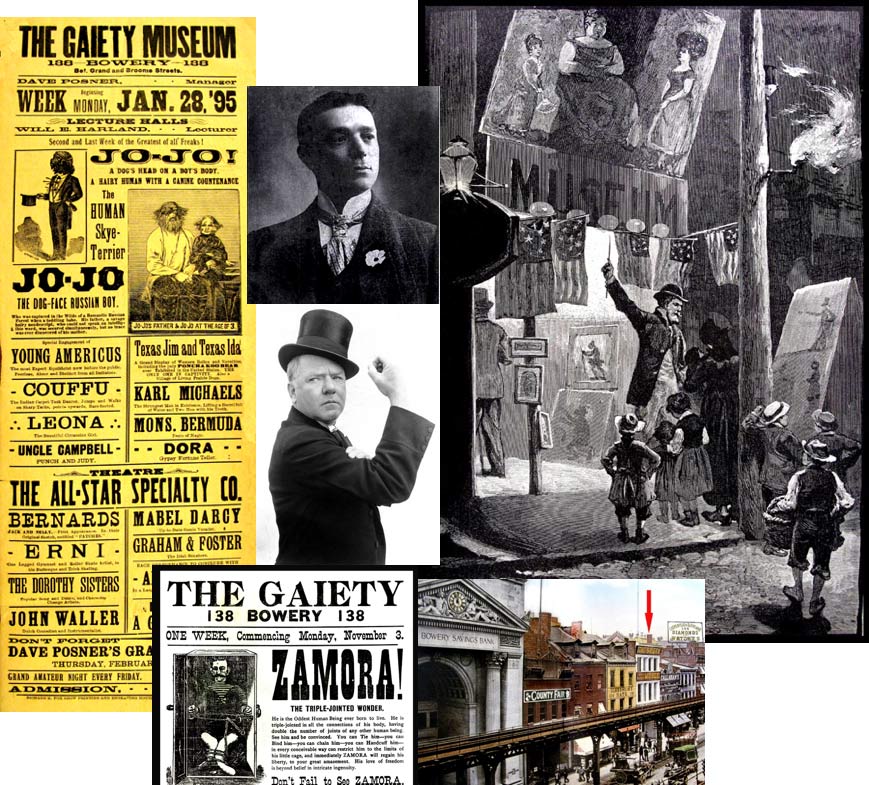
Bottom: W. C. Fields
Gaiety Dime Museum / Teatro Italiano (aka Drammatico Nazionale)
BUILT: CIRCA 1889
STYLE: RENAISSANCE REVIVAL
In 1903, this was Drammatico Nazionale, one of several Italian theatres established on the Bowery by the great Antonio Maiori. Though Mozart’s librettist Lorenzo DaPonte had staged Italian opera In NYC as early as 1808, and opened a short-lived Italian opera house in 1833, it was through Maiori on the Bowery that Italian theatre was established here.
Maiori’s 1902 appearance as Cellini at the Bowery’s Windsor Theatre had made him the darling of NY society’s elite 400, who would travel there in slumming parties to see what Mrs. Havemeyer had proclaimed “the greatest tragedian in the world.”
In addition to the Drammatico Nazionale, Maiori established Maiori’s Variety Theatre at 235 Bowery and Maiori’s Royal Theatre at 165-167 Bowery. Actor/producer/director Maiori also co-founded the Italian Actors Union.
storian/Educator Written for Windows on the Bowery, a 2016 signage project.
This structure was also popular from 1890 to 1902 as the Gaiety, one of the Bowery’s most flamboyant dime museums. In addition to trained lions and boxing exhibitions, one could see Jo-Jo the Dog Face Boy, tramp juggler W.C. Fields and contortionist Zamora — “the Triple-jointed Wonder” — an escape artist who pre-dated Houdini.
— David Mulkins
140 BOWERY: DEMOLISHED March 2016!
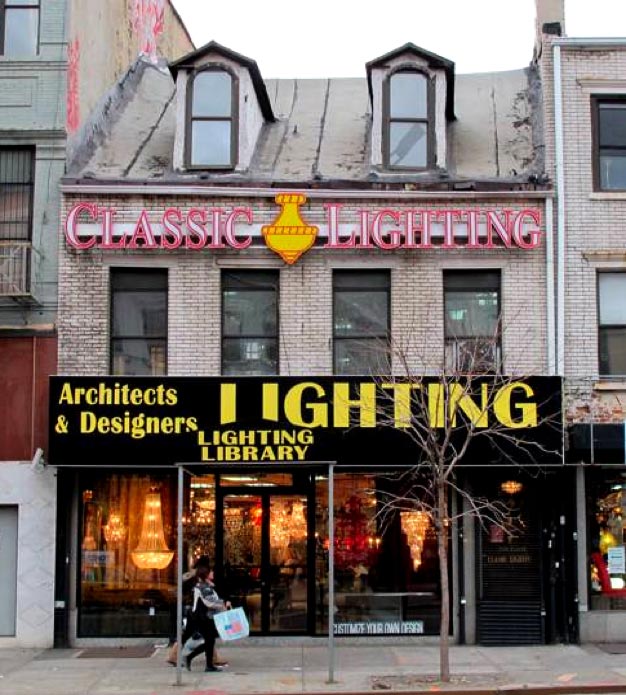
BUILT: CIRCA 1799
ARCHITECT: UNKNOWN STYLE: FEDERAL
This early Federal-style building may date back to at least 1808 and may even have been constructed in the last decade of the 18th Century. It is one of the oldest buildings still standing on the Bowery. Characteristic of the Federal-style, the 2 ½ story building has a peaked roof with twin gabled dormers capped by a cornice with returns and wood spandrels suggesting arched windows. The second floor windows of the four bay-wide façade display paneled stone lintels. From 1799-1802, 140 Bowery is listed as an address for William Everet, butcher. In 1808, another butcher, Henry Lovell is listed as owner. At least as early as 1825 the building served as both business and residence. Michael Armstrong had a dry goods business at 140 and at 140 ½ Robert M. Hartley had a dry goods store. By, at least, 1828 the owner is listed as Robert Tier.
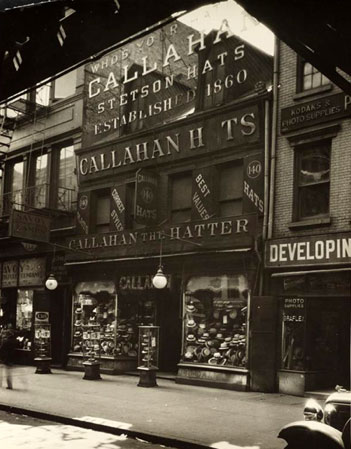
185 Bowery – Germania Bank Building: Demolished in 2010!
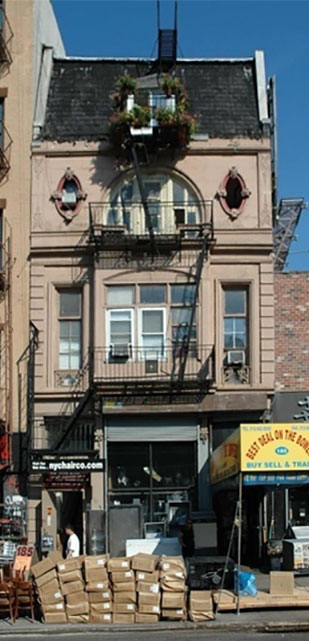
First of its 3 locations on the Bowery
BUILT: 1870S STYLE: SECOND EMPIRE
I am far from alone in thinking that the building boom has gone far enough. If huge hotels continue to be built there, the congestion will erase the very attraction that leads visitors to the Bowery. The scale will be utterly destroyed, and many charming survivors of the nineteenth century — the exquisite house at 195, for example, — are immediately endangered.
— Historian Luc Sante (Low Life) from 5/1/2009 letter to City Planning
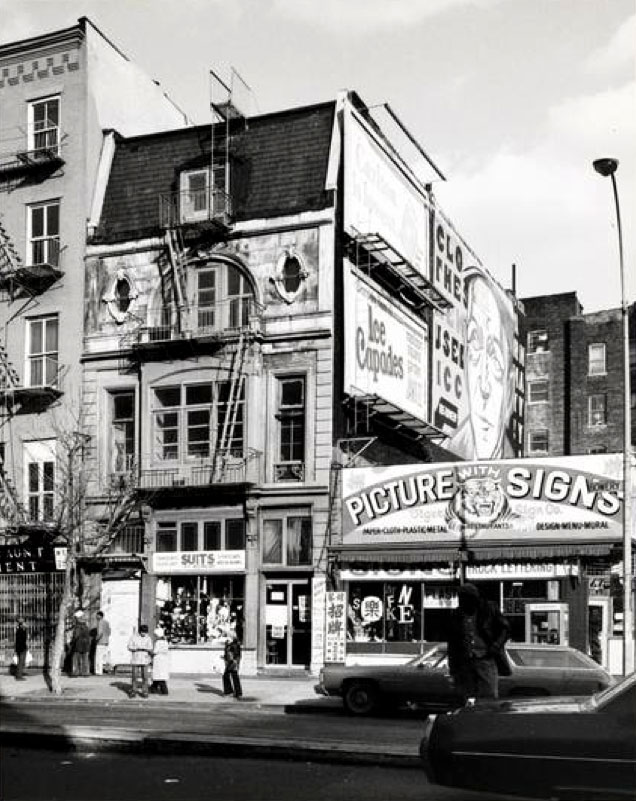
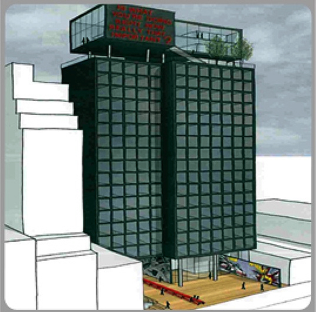
35 Cooper Square: Demolished in May 2011!
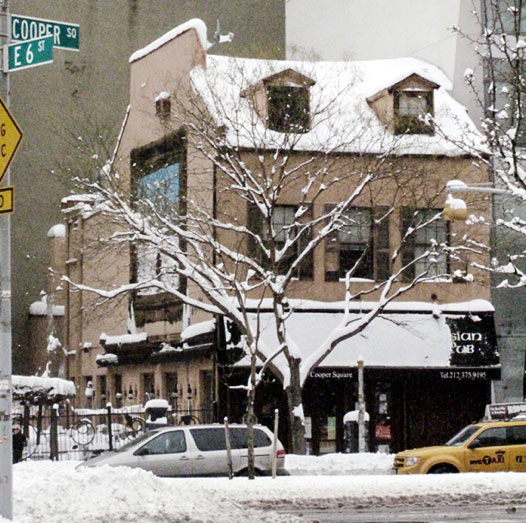
BUILT: CIRCA 1827
STYLE: FEDERAL STYLE
Built by Nicholas William Stuyvesant, a descendant of Peter Stuyvesant — The oldest building on Cooper Square: Over 30 years older than nearby Cooper Union, 7 Years older than Merchant’s House Museum. Abe Lincoln would have walked past 35 Cooper on his way to make the great anti-slavery speech at Cooper Union. Residents included Beat poet Diane di Prima and actor Joel Grey.
